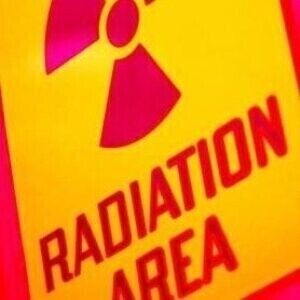Environmental Laboratory
How can we dispose of nuclear waste without environmental pollution?
Jan 16 2024
Nuclear power is a significant source of low-carbon energy, but it generates radioactive waste that requires safe and secure management. The disposal of nuclear waste is a complex issue that involves scientific, technical, environmental, and societal considerations. This article provides an overview of the strategies and challenges in the safe disposal of nuclear waste. Nuclear waste varies in levels of radioactivity. It includes spent nuclear fuel, high-level waste (HLW), intermediate-level waste (ILW), and low-level waste (LLW). Each type requires different disposal strategies. The radioactivity of nuclear waste decreases over time through decay. However, some isotopes have long half-lives, requiring isolation from the environment for thousands of years.
For HLW and spent nuclear fuel, deep geological repositories (DGRs) are considered the safest disposal method. These are engineered facilities located deep underground in stable geological formations, ensuring long-term isolation from the biosphere. LLW and some types of ILW with shorter half-lives are often disposed of in near-surface facilities. These are engineered structures above or below the ground but at a shallower depth than DGRs. Advanced nuclear technologies aim to reduce the volume and toxicity of waste. Transmutation involves converting long-lived isotopes into shorter-lived or stable ones. Recycling involves reprocessing spent fuel to extract usable materials.
Ensuring the containment and isolation of radioactive waste for millennia is a primary challenge. It requires robust engineering and comprehensive understanding of geological processes. Identifying suitable locations for DGRs involves geological, environmental, and social factors. Public opposition, often due to safety concerns or lack of trust in authorities, can be significant. Long-term governance and monitoring of disposal sites are necessary to manage potential risks. Establishing regulatory frameworks that ensure safety standards over extended timeframes is challenging. Since radioactive waste disposal has global implications, international collaboration is vital. Sharing knowledge, technology, and best practices can lead to more effective and universally accepted disposal solutions.
Innovative technologies are being developed to enhance the safety and efficiency of nuclear waste disposal. Engineered barrier systems (EBS) are designed to work with the natural geological barriers to prevent the release of radionuclides. EBS includes waste forms, containers, and buffer materials that provide additional containment. Research is ongoing to develop new waste forms that are more durable and less prone to leaching. Glass and ceramics are being studied for their ability to immobilize radionuclides effectively. Borehole disposal involves drilling deep boreholes into stable geological formations for the disposal of high-level waste. It's considered a potentially safer and more cost-effective alternative to DGRs.
The disposal of nuclear waste raises ethical questions about the responsibility to future generations. It's crucial to ensure that the burden of managing long-lived waste doesn't fall unfairly on future societies. Public engagement and transparent decision-making processes are essential for gaining societal acceptance.
Ongoing research into the behavior of radioactive materials in various geological settings is crucial. This includes understanding the long-term effects of radiation on materials used in waste containment. Establishing stringent regulatory standards and independent oversight can enhance public trust in nuclear waste disposal methods. Developing globally harmonized standards and sharing best practices can lead to more effective and safer waste disposal methods.
The safe disposal of nuclear waste is a critical aspect of the nuclear fuel cycle. It requires an integrated approach that combines advanced technology, rigorous scientific understanding, robust regulatory frameworks, and responsible societal engagement. As nuclear power continues to play a role in meeting global energy needs, developing sustainable and safe waste disposal methods remains a priority for the nuclear industry and regulatory bodies. By addressing the technical, environmental, and ethical challenges, we can ensure a responsible legacy for future generations while harnessing the benefits of nuclear energy.
Digital Edition
AET 28.3 September 2024
September 2024
Business News - ENVEA announces acquisition of APAQ Group - SICK and Endress+Hauser sign strategic partnership - Efforts to curb gas flaring intensify amid environmental concerns Air Monito...
View all digital editions
Events
WEATHER • CLIMATE • WATER / EARTH OBSERVATIONS / GREEN ECONOMY
Oct 29 2024 St. Petersburg, Russia
Oct 30 2024 Hong Kong
Nov 05 2024 Toronto, Canada
Nov 05 2024 Rimini, Italy
Nov 06 2024 Ho Chi Minh City, Vietnam



















